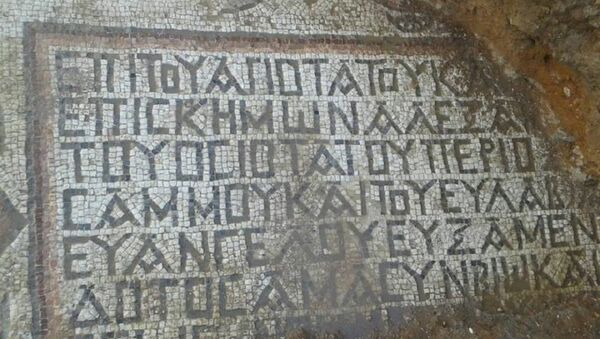Speaking to Sputnik Arabic, Abdel Qader Farzat, the head of Hama Museums and Antiquities Department in Hama said that "valuable artefacts have been found outside Akerbat, which lies 85 kilometers east of Hama. When the first reports from the military arrived, a group of our experts traveled to the scene and determined that the mosaic dates back to the Byzantine epoch. It was created in the first half of the fifth century. The large-sized mosaic features birds and is covered with a 1.5-meter layer of earth."
Photo credit: Mohammad Najm
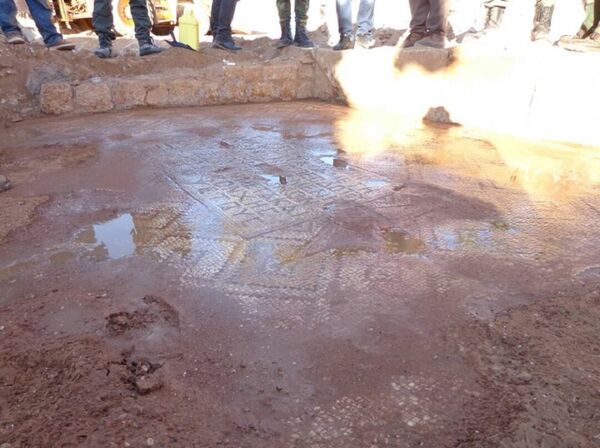
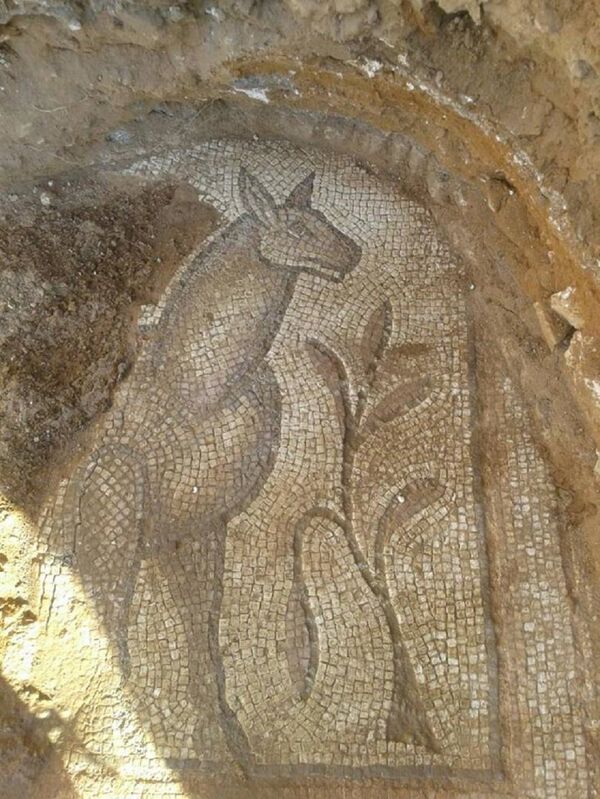
"As we were digging the newly found mosaic out, we spotted yet another one, just 80 centimeters away. The second one lies not that deep, it's 7x8 meters in size. The image shows peacocks, ducks, pigeons, plants and animals, geometrical figures as well as six Greek lines. One of its sides is semi-circular, which might have housed an apsidal altar in a church," he added.
According to the speaker, the excavation works have now entered the third week. The best specialists with the Antiquities Department are engaged in cleaning up the artefacts so that they could be transported to laboratories for renovation later on.
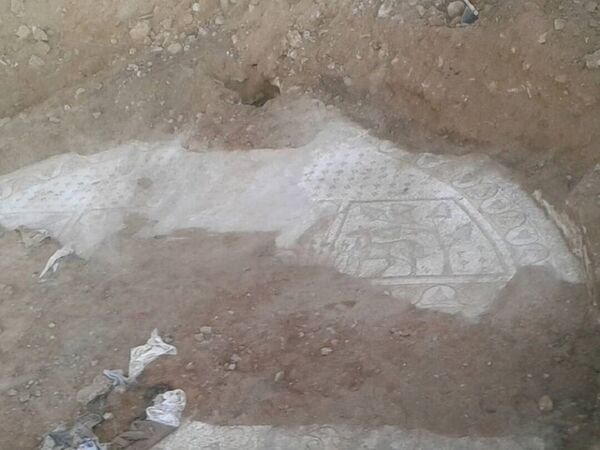
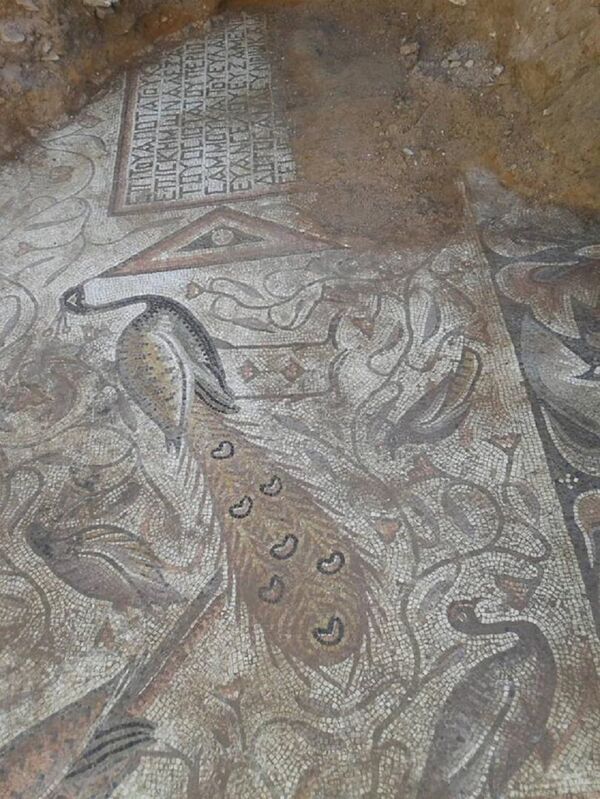
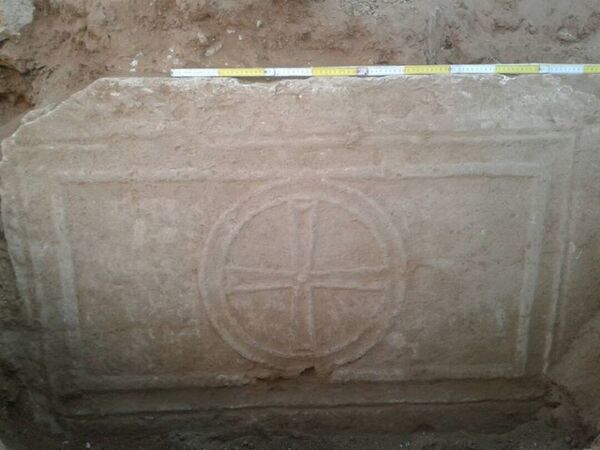
Once all the work is done, the objects will be put on public display, Farzat noted.
The Syrian army seized control of Akerbat in September 3, 2017. Combat engineers have been demining the territory, including rural and deserted parts of the country ever since. Only because the search for mines was so thorough was it possible to find the archeological discovery.
READ MORE: Turkey Preparing Ground Offensive Against YPG in Syria — Reports
